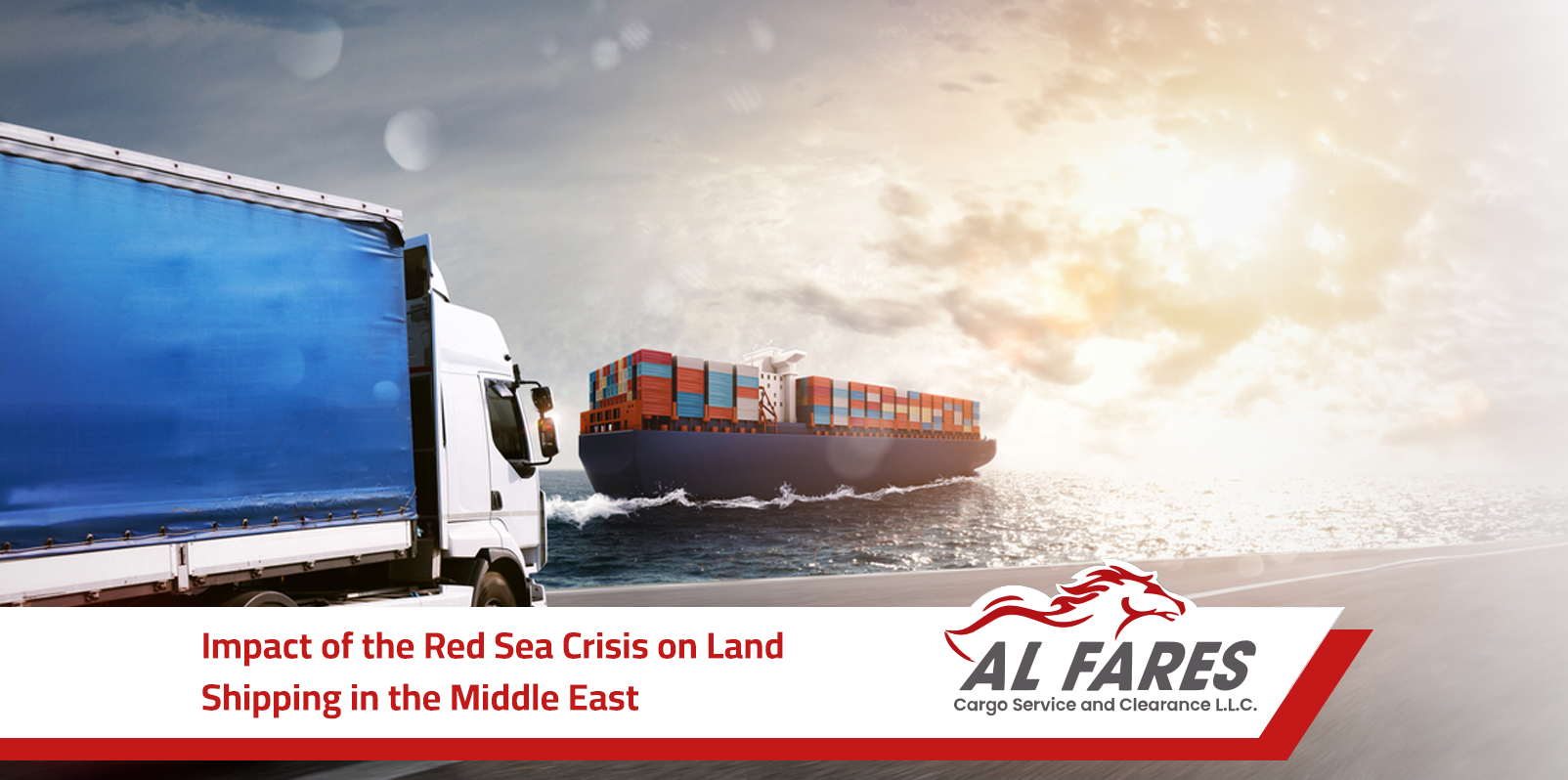The shipping and land transportation industry is a vital sector in the global economy, playing a crucial role in facilitating the movement of goods and international trade. However, the stability and smoothness of land shipping operations may face multiple challenges, including geopolitical events, economic crises, and natural disasters.
The Middle East is one of the largest land shipping markets globally, heavily relying on the efficient use of roadways to transport goods to and from ports and major logistics centers. With the Red Sea crisis, companies have experienced significant delays in the flow and distribution of goods, affecting the overall smoothness and efficiency of land shipping. This crisis poses a significant challenge for companies and suppliers that depend on a seamless land supply chain to ensure timely delivery and meet customer needs.
Furthermore, the Red Sea crisis has led to increased shipping and land transportation costs, as companies are forced to explore alternative and longer routes for transporting goods, incurring additional expenses and time. This places companies in economic challenges, including extra costs and delays in cargo delivery, impacting competitiveness and profitability. Additionally, the land shipping sector in the Middle East faces challenges in providing alternative and efficient transportation means to avoid similar future crises, requiring additional investments in infrastructure development and readiness enhancement.
Impacts of the Red Sea Crisis on Land Shipping in the Middle East:
- Global inflation rates have partially increased due to around 10% of global oil supplies and approximately 8% of gas passing through the Red Sea annually, along with the transportation of about 50 million tons of agricultural products. This phenomenon is expected to significantly affect land shipping rates, causing an increase and subsequently elevating global inflation rates.
- The halt of navigation lines through the Red Sea will have a substantial impact on the increased cost and insurance of goods shipped by land transportation. Additionally, there will be an increase in the time it takes for goods to reach their destination, whether exported or imported.
- Changes in shipping methods resulting from the crisis have compelled companies to explore new ways of transporting goods and adopting alternative options. This shift may have side effects on trade relationships and global trade movements.
- Logistic challenges have increased significantly, with companies forced to deal with additional challenges such as storage and distribution of goods due to the crisis's impact on land shipping routes.
- Shipping rates from Asia to Northern Europe have more than doubled this week, exceeding $4,000 per 40-foot equivalent unit (container). Prices in the Asia-Mediterranean region have risen to $5,175 per container. Some shipping companies have announced rates exceeding $6,000 per 40-foot container for Mediterranean shipments, with additional fees ranging from $500 to $2,700 per container.
Furthermore, shipping rates from Asia to the East Coast of North America have increased by 55%, reaching $3,900 per 40-foot container. Shipping rates from Asia to the West Coast of America have increased by 63%, exceeding $2,700. It is expected that more shipping companies will start avoiding the East Coast and prefer West Coast ports.
Alternative Routes Used in Land Shipping:
More than 20 maritime shipping companies have announced their intention to avoid the Bab el Mandeb strait, accounting for approximately 52% of global shipping. Some of these companies have declared the use of land routes to access the Red Sea, contributing to the development of alternative land shipping routes. These routes include:
1.First Route: Hapag-Lloyd recently announced its decision to continue redirecting its ships to sail around the Cape of Good Hope until further notice due to ongoing disturbances in the Red Sea. The company confirmed its readiness to open new land passages through Saudi Arabia from areas such as Jebel Ali, Dammam, and Jubail to ease the pressure on its business operations and facilitate the delivery of goods originating from Jeddah.
Reports indicate the presence of five Saudi ports on the Red Sea coast that can be used as terminals for this alternative land route, contingent upon the availability of suitable railway lines. Saudi Arabia is currently working on establishing a land route for this purpose, and although the project may take some time, it is considered necessary for its impact on global trade.
The Red Sea is a crucial path for global trade, with about 13% of total global trade passing through it, accommodating approximately 23,000 vessels annually. It represents around 30% of container traffic worldwide and 40% of trade between Europe and Asia. Additionally, Europe heavily relies on this route to transport around 60% of its energy needs.
2.Second Route: An agreement has been reached between Egypt and Jordan to operate the Arab Bridge Maritime and Land Transport between the port of Aqaba in Jordan and Egyptian ports on the Mediterranean Sea. This serves as an alternative to the affected shipping routes in the Red Sea and Bab el Mandeb, according to Jordan's news agency.
Under the agreement, the Arab Bridge Company has expedited the completion of all necessary international and technical requirements for the operation of this alternative route by creating a new maritime path serving both land and sea transport. The alternative route passes through areas such as Aqaba, the port of Nuweiba in Egypt, and important Egyptian ports on the Mediterranean, including Alexandria, Port Said, and Damietta.
This maritime route connects vital areas in the Red Sea and the Mediterranean via a network of land roads, allowing for trade route diversification and reducing transportation costs. Shipping container journeys from Jordan to the United States via Egyptian ports are expected to take between 18 to 20 days.
3.Third Route: Disruptions in the Red Sea region have led to an increased demand for rail transport to overcome challenges facing global trade during the shipping crisis.
Many companies in the Middle East have started transporting their goods to Europe by sending them via rail from China to Europe through Russia. This collaboration with the European Union allows the transportation of goods via rail through Russia, excluding products subject to sanctions.
As a result, we have seen a 37% increase in reservations for railway lines between China and Europe in the past four weeks.


 Track Your Shipment
Track Your Shipment
 Online Enquiry
Online Enquiry
 Sign In
Sign In
 English
English

 Alfares Cargo
Alfares Cargo
 Logistic Informations
Logistic Informations
 2024-03-20
2024-03-20












